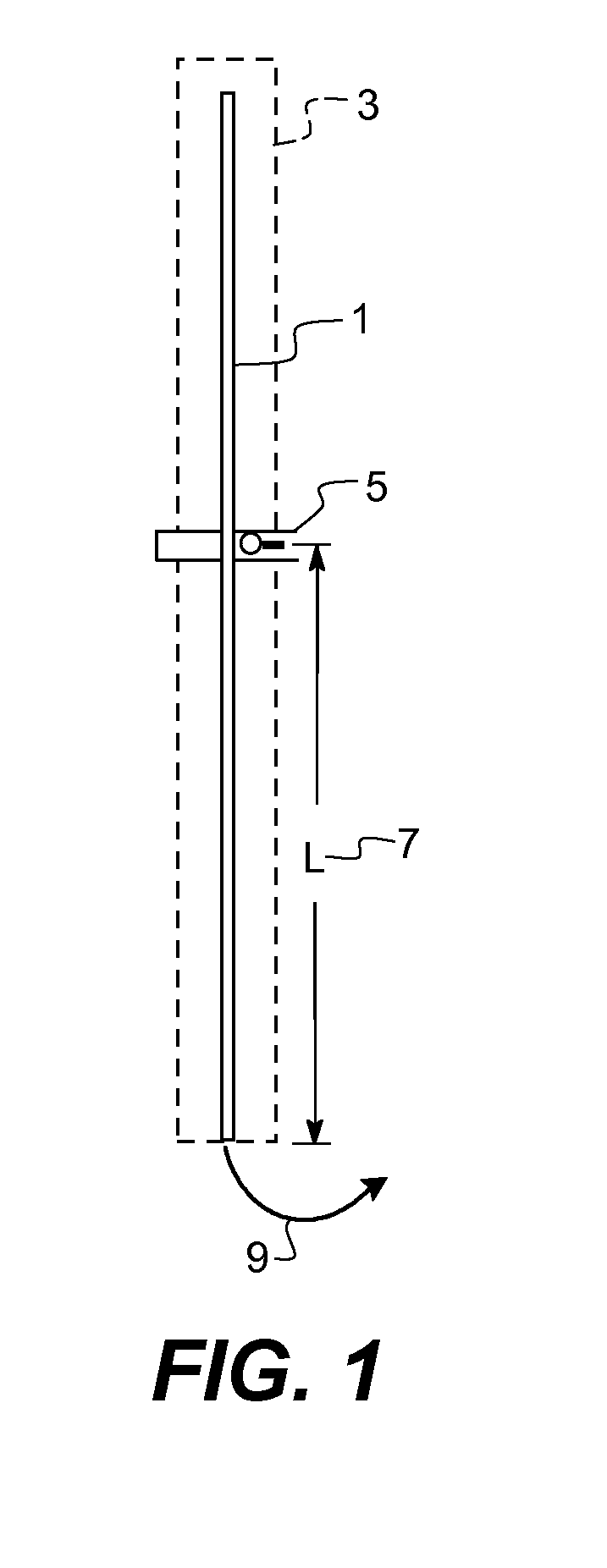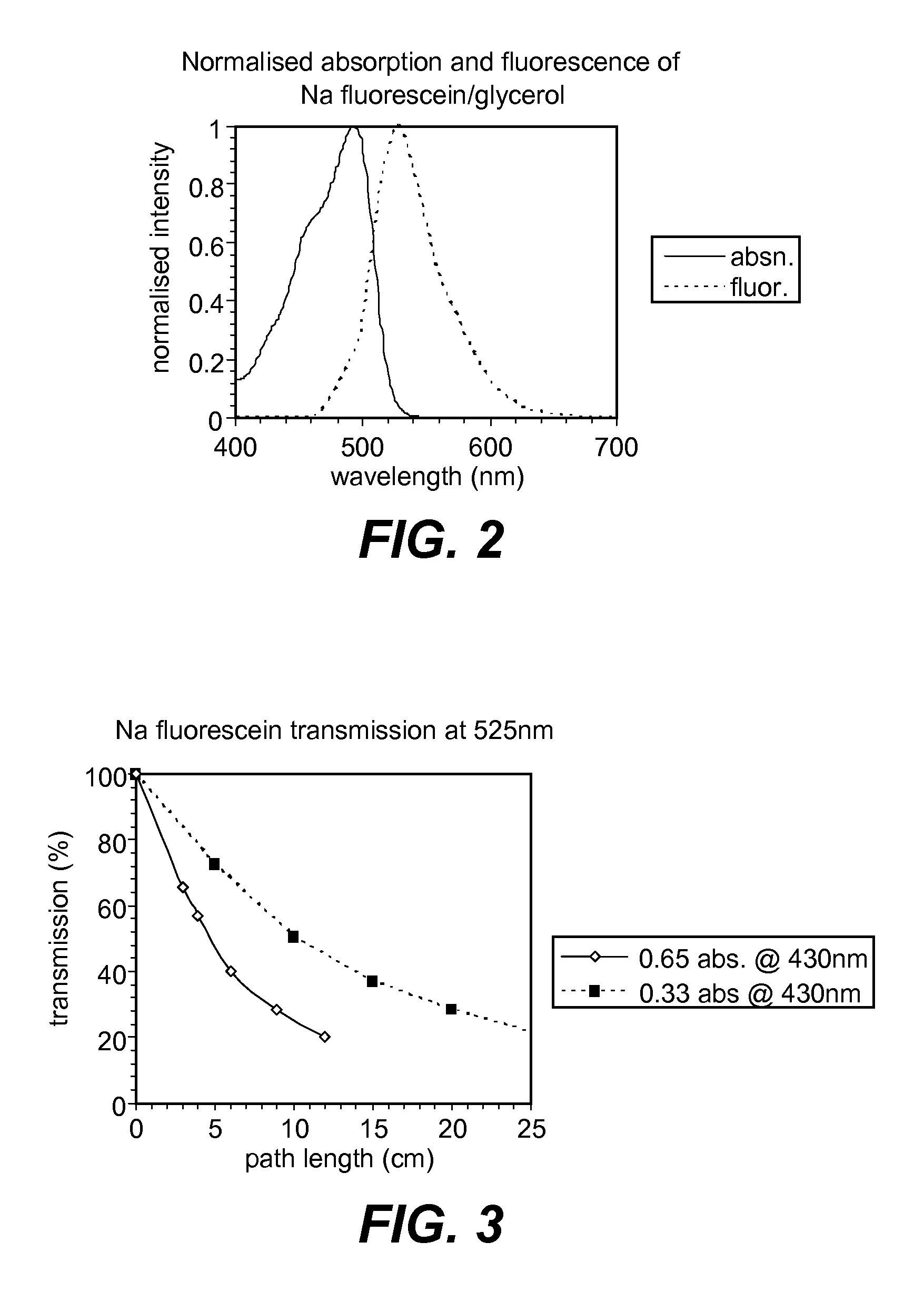Solar concentrator
a concentrator and solar energy technology, applied in the direction of photovoltaics, electrical equipment, semiconductor devices, etc., can solve the problems of difficult to find suitable fluorescent dyes as absorbing materials, difficult to find fluorescent dyes that are effective in diffuse light, and high production costs of their manufacture materials, etc., to achieve efficient and effective concentrating incident radiation, low surface area, and minimal amount of self-absorption
- Summary
- Abstract
- Description
- Claims
- Application Information
AI Technical Summary
Benefits of technology
Problems solved by technology
Method used
Image
Examples
example 1
[0103]Two samples, one involving a conventional high quantum yield fluorescent dye, and one involving a high quantum yield phosphorescent dye belonging to the class claimed, were prepared to demonstrate the 1-dimensional efficiency of luminescence transmission. Glass tubes (45 cm length, 0.40 cm outer diameter, 0.24 cm. inner diameter, glass refractive index 1.47) were filled with individual dye solutions, which were prepared from a solvent or solvent mixture, whose refractive index was matched to that of the glass tube. The dye solutions under comparison were chosen to have nearly identical emission profiles with full-width half-maximum positions at approximately 500 nm and 560 nm. Solutions were excited by a 430 nm LED (3 mm diam.) at different positions along the tube, the different solutions under comparison were prepared to have the same absorbance at this excitation wavelength. The arrangement was as shown in FIG. 1, which shows a glass tube 1 filled with a dye solution surrou...
PUM
 Login to View More
Login to View More Abstract
Description
Claims
Application Information
 Login to View More
Login to View More - R&D
- Intellectual Property
- Life Sciences
- Materials
- Tech Scout
- Unparalleled Data Quality
- Higher Quality Content
- 60% Fewer Hallucinations
Browse by: Latest US Patents, China's latest patents, Technical Efficacy Thesaurus, Application Domain, Technology Topic, Popular Technical Reports.
© 2025 PatSnap. All rights reserved.Legal|Privacy policy|Modern Slavery Act Transparency Statement|Sitemap|About US| Contact US: help@patsnap.com



